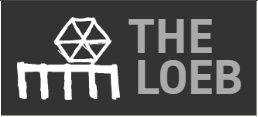Object number2021.32
Density 1936-1938
Portfolio/Seriesfrom the series Substance of Density
Date2020
Artist
Alison Rossiter
(American, born 1953)
CultureAmerican
MediumThree unique gelatin silver prints
DimensionsFramed: 15 3/4 x 18 1/8 x 1 1/2 in. (40 x 46 x 3.8 cm)
Credit LinePurchase, Advisory Council for Photography
On View
Not on viewPeriod21st c
Classification(s)
InscribedOn a printed Yossi Milo Gallery label affixed to the reverse of frame: Alison Rossiter / (American, b. 1953) / Density 1936-1938, 2020 / [image of recto] / Three Gelatin Silver Prints / Framed: 15 3/4 x 18 11/16" (40 x 46cm) / Signed, Titled and Dated Verso in Pencil / Unique / AR21559 / REPRESENTED BY / YOSSI MILO GALLERY, INC. / 245 Tenth Avenue, NY, NY 10001 / TEL: 212.414.0370 / yossimilo.com; by unidentified hand, upper left on label in pencil: FLLAC 2021.32
ProvenancePurchased from Yossi Milo Gallery, 2021Vassar Exhibitions
Exhibition HistoryAlison Rossiter: Substance of Density 1918-1948, Yossi Milo Gallery, Inc., New York, NY, March 6 - May 2, 2020; On the Grid: Ways of Seeing in Print, Frances Lehman Loeb Art Center, Vassar College, August 20 - December 22, 2022
Label TextResponding to the dominance of digital images in the twenty-first century, many contemporary artists revisit photography’s chemical and material possibilities. Alison Rossiter and Marco Breuer each experiment with photographic chemistry to create abstract, sculptural objects without the use of a camera. Rossiter collects photographic paper that expired almost a century ago. Without further exposing it to light, she develops the paper in the darkroom to reveal subtle, ghostly marks that have been preserved over time in the photographic emulsion—a chemical coating that makes paper sensitive to light. Arranged in abstract compositions, she calls the monochromatic prints “time capsules.” She preserves not only expired paper but, more significantly, the notion of the photography as a durable object. Likewise fascinated by material transformation, Breuer distresses the usually smooth, pristine surface of photographic paper using an array of techniques—such as burning, scratching, folding, sanding, and chewing—and then exposes it to light directly. These actions produce irregular marks that have depth and texture, revealing layers of paper and colors that emerge from the emulsion, inviting an entirely new way of seeing.
DescriptionHinged on board; white maplewood frame; non-reflective, UV-filtered Optium Museum Acrylic; individual elements are not to be separated. Three gelatin silver prints of varying sizes mounted to board, each with different tonal qualities ranging in color from grey, to a warm sand-like color.
Object information is a work in progress and may be updated as new research findings emerge.
To help improve this record, please email
loebcollections@vassar.edu


![[Mailboxes in Maine]](/internal/media/dispatcher/18618/thumbnail)






